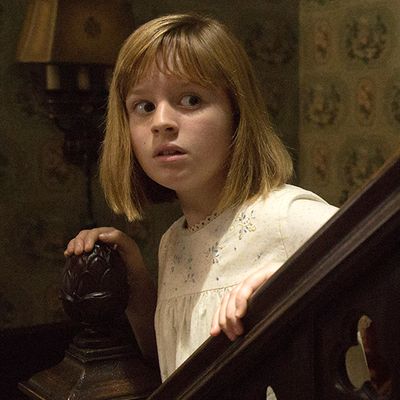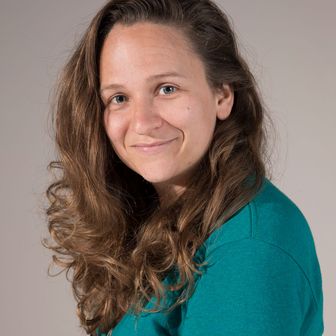
Fans of horror movies have dug their own (… excuse me) graves when it comes to the glut of the Passable Horror Sequel. We’ll show up to the theater no matter what, which means we’re given half-assed attempts at brand extension like Psycho 4: The Beginning and Friday the 13th Part VII: Jason Takes Manhattan. So it’s long been something of an unspoken, unchallenged fact: Horror franchises get progressively worse with each subsequent installment. But two recent horror sequels, 2016’s Ouija: Origin of Evil and this weekend’s Annabelle: Creation, have defied expectations by being — if you can imagine it — even better than their predecessors.
Though 2014’s Ouija and Annabelle made $103 million and $256 million at the global box office, respectively, both were decimated by critics. Ouija earned a staggering 7 percent rating on Rotten Tomatoes (though Vulture’s former film critic Bilge Ebiri called it “confident, meat-and-potatoes horror”), while Annabelle earned 29 percent and Ebiri’s distinct boredom. Perhaps sensing that putting audiences in a light coma is no way to build an enduring brand, when it came time to make the inevitable sequels, the film’s producers made some wise decisions that ultimately paid off: Annabelle: Creation just won its opening weekend, averaging $10,000 per screen in the States (as well as a 69 percent rating) and already stacking up more than $72 million across the world, while Ouija: Origin of Evil came in at 82 percent and $81 million worldwide.
There are important lessons to be learned from the specific ways Origin of Evil and Creation steered their respective franchises back on course and into the realm of respectability. In the interest of ensuring we’ll never have to watch another The Rage: Carrie 2 again, we’ve compiled some tips for franchise filmmakers current and future.
Get better directors.
The best way to elevate your franchise: Inject it with proven directing talent. Origin of Evil replaced Stiles White (whose only directorial credit was, and still is, Ouija) and secured Blumhouse Productions workhorse Mike Flanagan, who was just coming off Oculus and Hush, both massive horror hits. Annabelle: Creation, meanwhile, swapped out John R. Leonetti — the man behind The Butterfly Effect 2 — for David Sandberg, who made Creation his first follow-up after last summer’s surprise smash, Lights Out. Both made immediate and obvious improvements upon their respective originals; the sequels were more terrifying and more technically impressive.
Recognizable brand names are a kind of cheat code in horror movies — audiences care about the doll Annabelle because we met her in the Warren family’s nightmare room in The Conjuring, and Ouija boards have been kicking around game closets for decades — but it takes much more than familiarity with an artifact to keep scaring the shit out of audiences for two straight hours. In jump-scare-centric movies, the biggest challenge is making sure the audience doesn’t get bored. There’s no higher purpose here, other than the repetition of build-up, pay-off, and Sandberg and Flanagan both maintain tension better than their predecessors, establishing pacing that mitigates the long lulls plaguing the earlier movies.
It takes a deft hand to make cheap thrills interesting, and in Origin of Evil, Flanagan frames up a handsome, mid-century period piece, and manipulates viewers by using both depth of field and negative space. As a viewer, to protect yourself against the imminent scares, you have to search the ominously empty frame in tense moments to make sure he doesn’t catch you off guard — but more often than not, he still does. For his part, Creation’s Sandberg laces together what are essentially wall-to-wall bits, each time adding an extra beat at the end; when you think the moment has already passed, that’s when Sandberg attacks.
Lean on the origin story.
Both Origin of Evil and Creation retcon their forebears by starting all the way at the beginning of their franchise’s stories, subsequently erasing the sins of their fathers and making room for more possible sequels in the future — while simultaneously making their bad predecessors more interesting by tying them to a larger mythology.
Horror origin stories are rife with clichés and land mines, though, so it’s a matter of picking the right tropes to trot out — old scary house! creepy kids! eerie lurking man with a complicated backstory! the ghost of a child! possessed dolls! Origin of Evil widens the scope of the Ouija story, moving beyond a single game or even a single family to link the torment of the demons all the way back to the horrors of the Holocaust (and one crazy, mad-scientist doctor performing human experiments in the basement of an anodyne suburban home). Creation reveals that the Annabelle doll didn’t just become a satanic vessel after a horrifying act of domestic violence, as per the first film. Instead, it gives her an even spookier backstory: Turns out, decades before landing in the clutches of The Conjuring’s spirit mediums Lorraine and Ed Warren, the doll was imbued with the spirit of an opportunistic demon that posed as a dead child, and preyed on a pair of grieving parents who longed to connect with their daughter again.
By deepening the legends, each movie emphasized the power and durability of the antagonizing forces — in other words, they let their audience know to be even more afraid.
Invest in a good Terrible Place.
Sure, people running around a house because something is chasing them is scary — but when you have to fear the house itself, the tension never really lets up (as long as the walls are still standing). The Terrible Place is a fundamental tenet of horror cinema, and if you build a good one, there’s a sturdy foundation on which to build everything else.
Origin of Evil devotes a lot more screen time to the bedeviled home than Ouija did, and Creation trades out the apartment building in Annabelle for a giant, isolated homestead. The improved locations are great set pieces, but more than that, they’re characters in and of themselves, extensions of the malevolence. Objects animate with the presence of the spirit; ghosts live in the walls. A character plummeting from the ceiling to the floor in Origin of Evil echoes a scene from the first Ouija, drawing a decades-long through line in the house’s demonic behavior. In Creation, old standbys like self-opening doors and creaky old rocking chairs are repeatedly used as danger cues, but seen through a keyhole, making the moment feel more dimensional and artful as opposed to predictable. At one point, an entire room threatens to crumble around a pair of the protagonists.
By the end of a good haunting story, characters shouldn’t just be running from ghosts — they should be running from the house itself.
Cast a bunch of kids (and sideline the teens).
A fact: Creepy kids are automatically more upsetting than creepy adults. Another fact: Kids in danger are automatically more upsetting than adults in danger. Putting children at the center of a horror movie is an easy way to raise the stakes, to increase the suspense, and play to the audience’s empathy without needing to up the gore. That’s because kids, with all of their innocence and purity and lack of skepticism, are the most believable (and preferred) antennae for receiving and translating spirit signals (think Poltergeist, Sinister, The Conjuring, Insidious, The Shining, The Ring — shall I go on?)
In contrast, the high-schooler ensemble is the most disposable collective in jump-scare horror movies. They’re often boiled down to archetypes, which means you’re bound to start rooting against the annoying ones (the glib or skeptical one, the boyfriend who lacks faith, the sassy jokester), reducing your principal cast to grist for the killer’s mill. (Can you name more than three central characters from, say, The Gallows, Sorority Row, Wish Upon, The Bye Bye Man, Smiley, Don’t Hang Up, See No Evil, or the first Ouija?)
Annabelle starred basically one adult woman at odds with the demon doll, while Ouija focused on a group of expendable high-schoolers playing with their witchboard in dim lighting. When the situation deteriorates for all of these characters, you can’t help but think, “Well, you shouldn’t have touched those scary toys in the first place!” In both Origin of Evil and Creation, teen characters show up, but serve in support roles as foils for the younger protagonists. It’s entirely more believable that children would be overwhelmingly compelled to play with demonically possessed toys, which is why it makes sense that Origin of Evil and Creation put a few sweet, well-meaning kids in the most imminent danger.
Wisely, both films hit the sympathy button even harder by creating past tragedies for their central children: Origin of Evil revolves around a single mother and her daughters grieving the death of their father, and Creation stars a bunch of orphaned young girls and a nun. Sure, it’s a shortcut play to stock a movie with the most vulnerable, but horror thrives on opportunism. So get yourself some imperiled, lonely kids!
Specifically, cast Lulu Wilson.
If your first horror movie struggled and you need to step it up for your sequel, do yourself a favor and cast Lulu Wilson. She’s the impossibly winsome star of both Origin of Evil and Creation, and could be the key to blowing this whole sequel game wide open. Hurry up and sign her before she ages out of looking like she was designed by Pixar.


